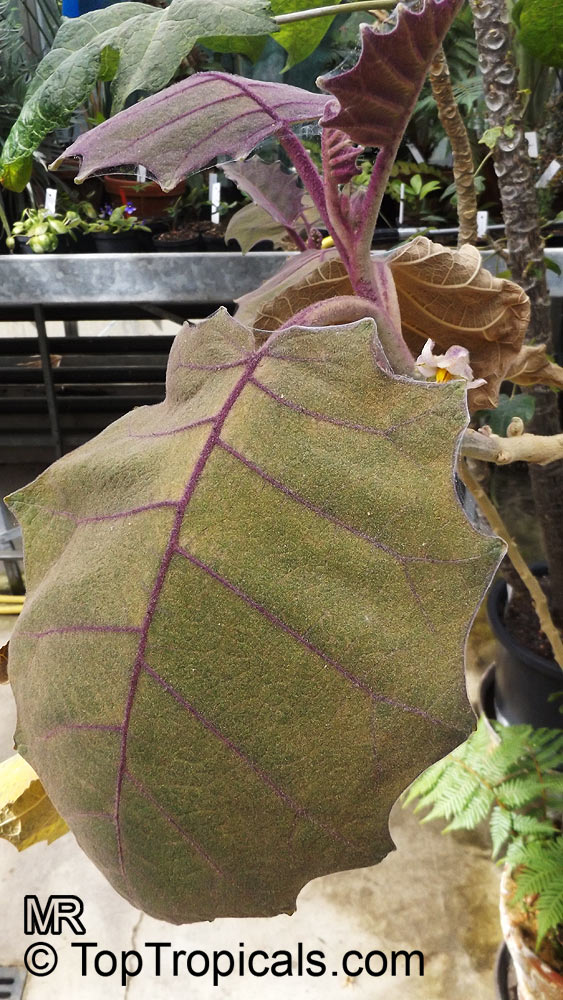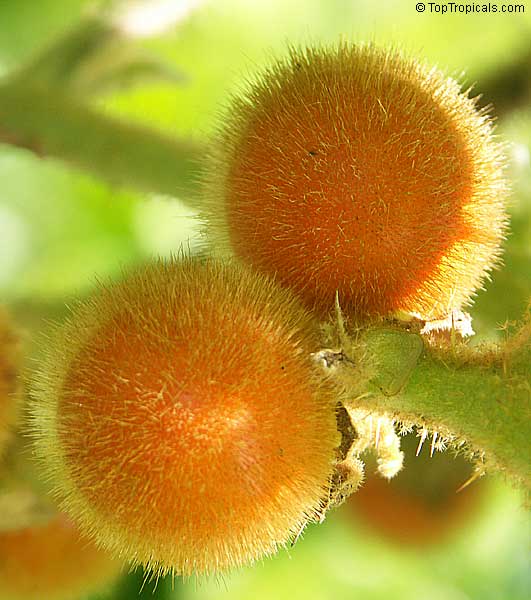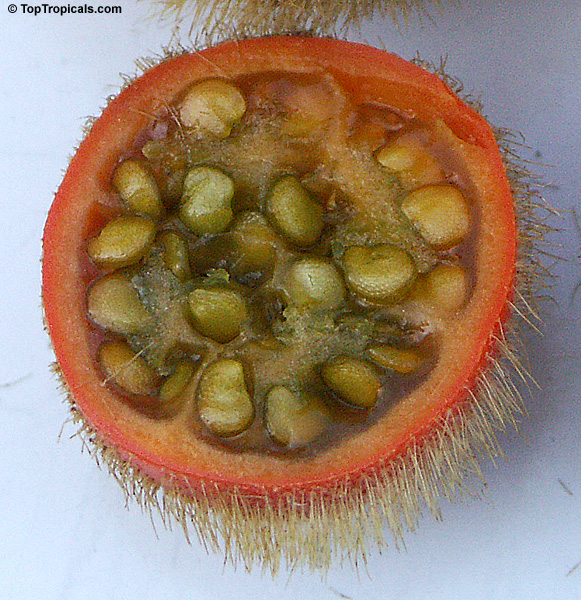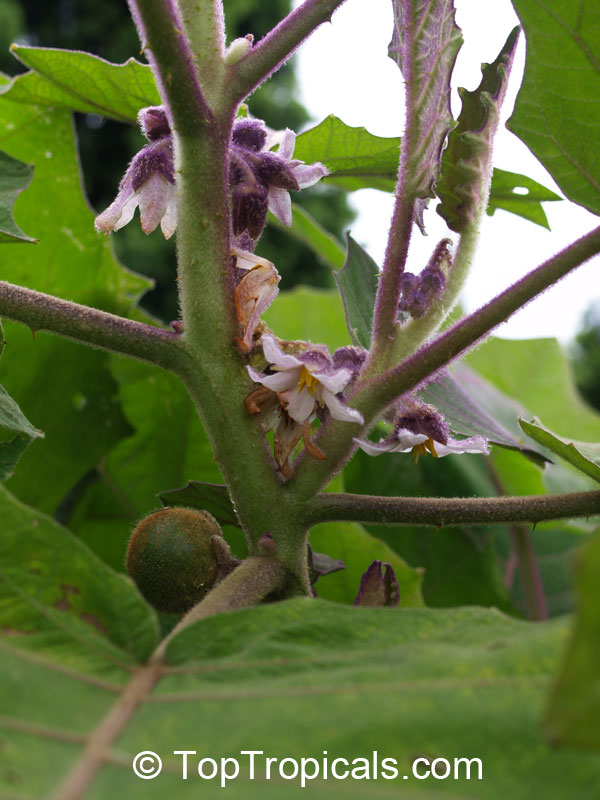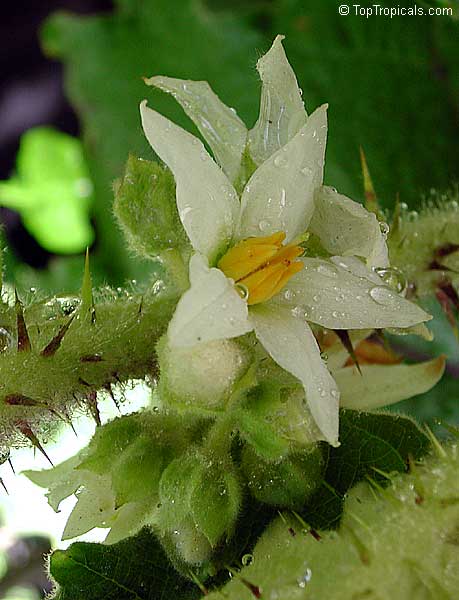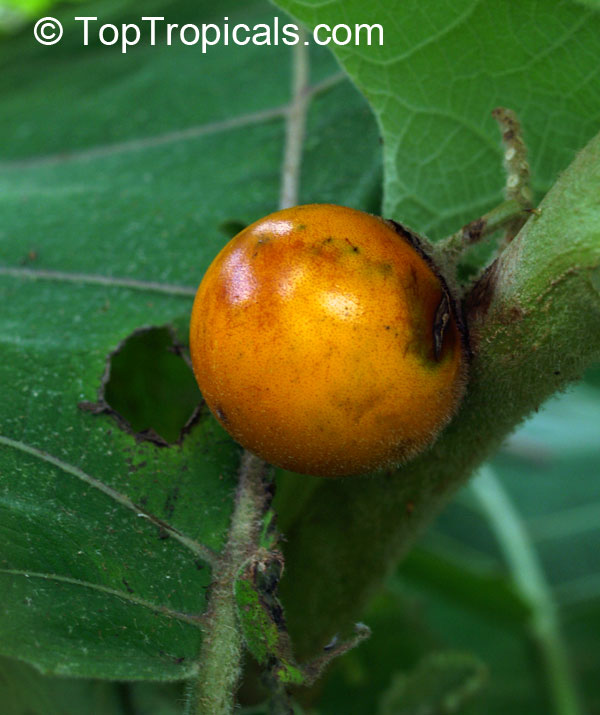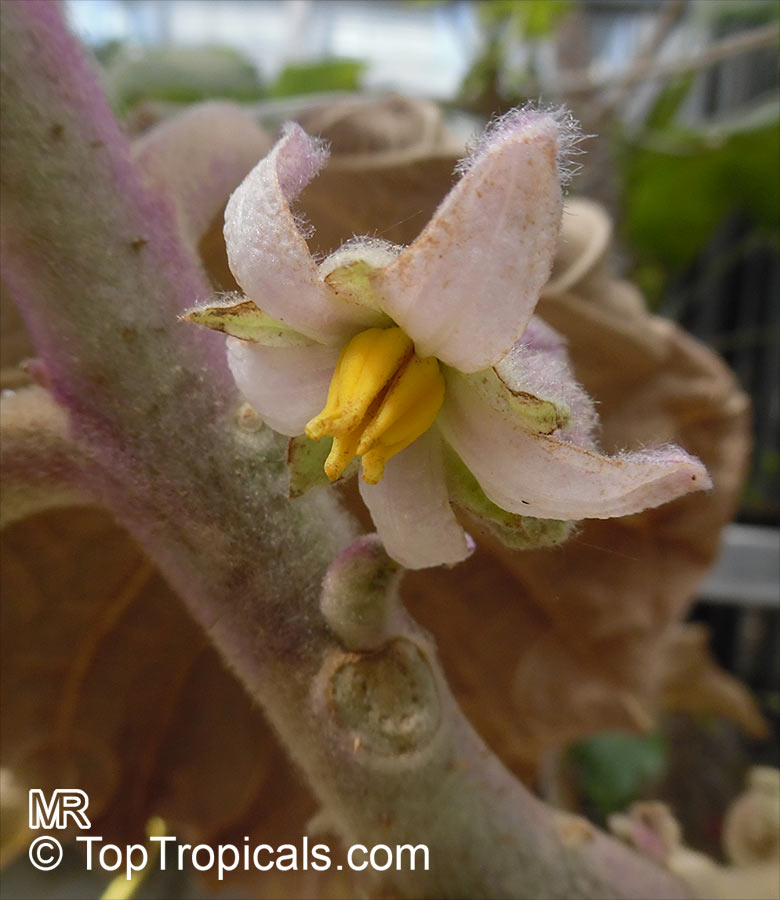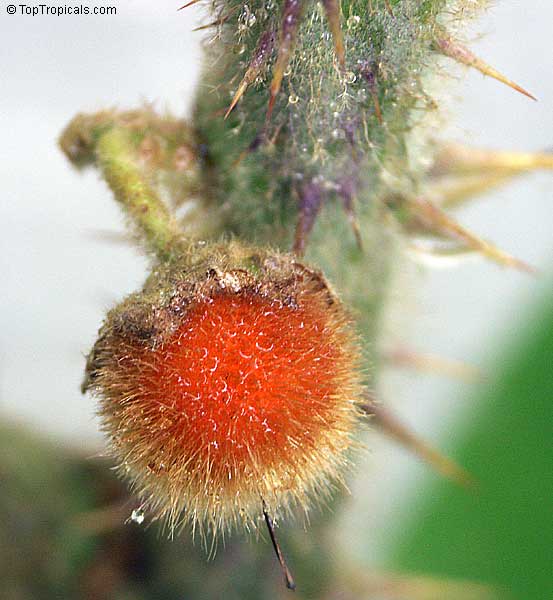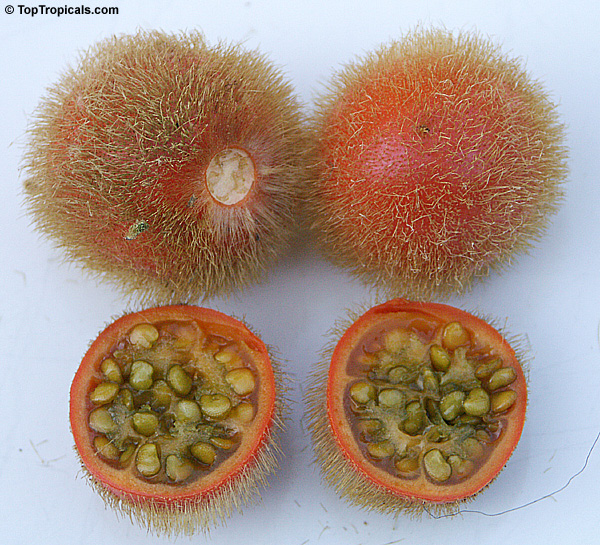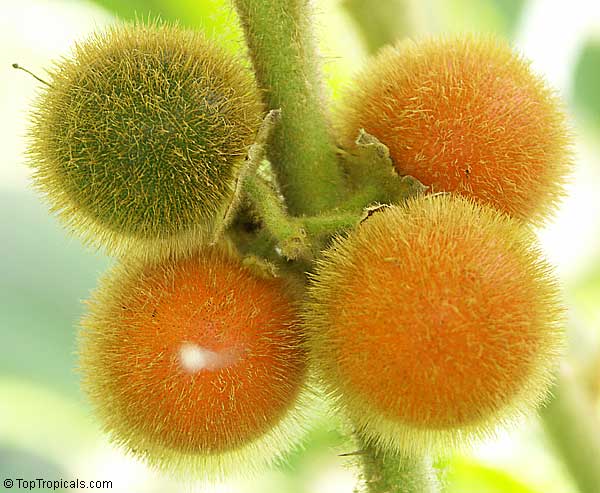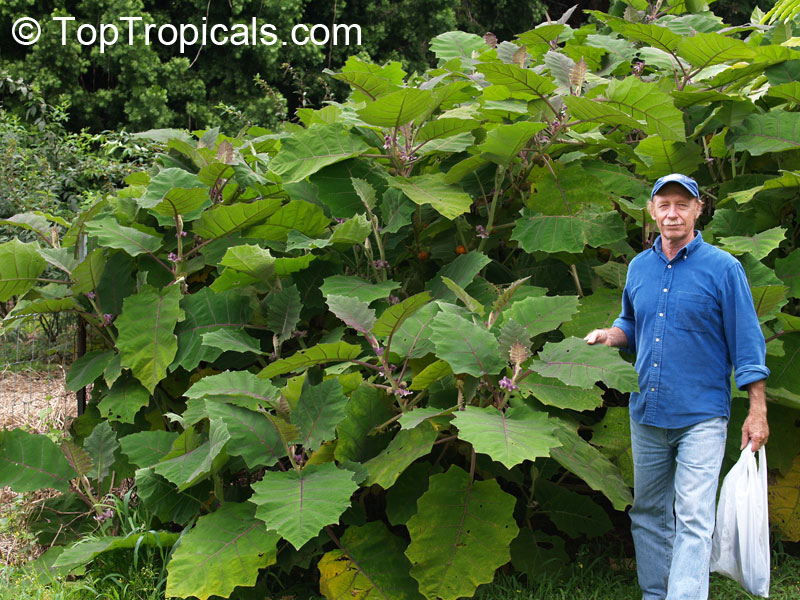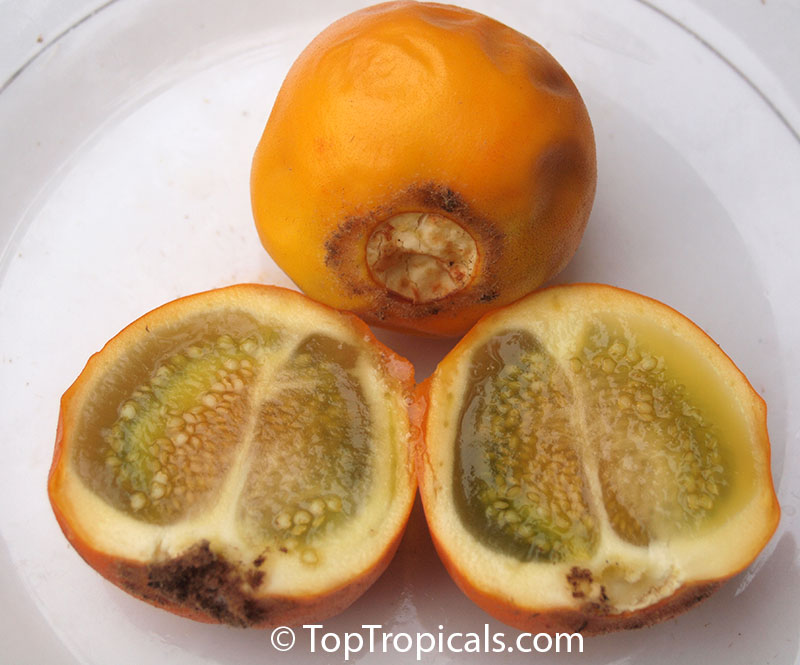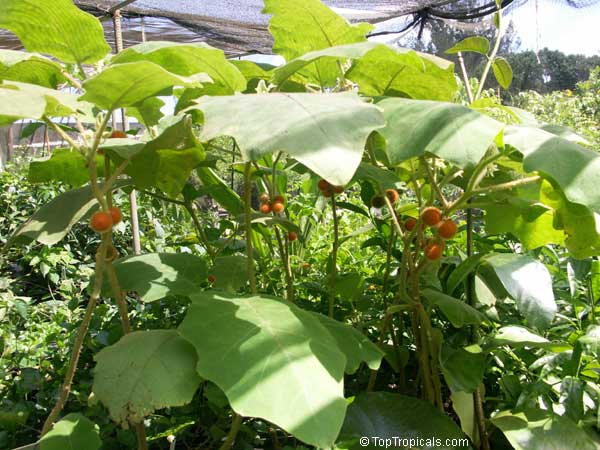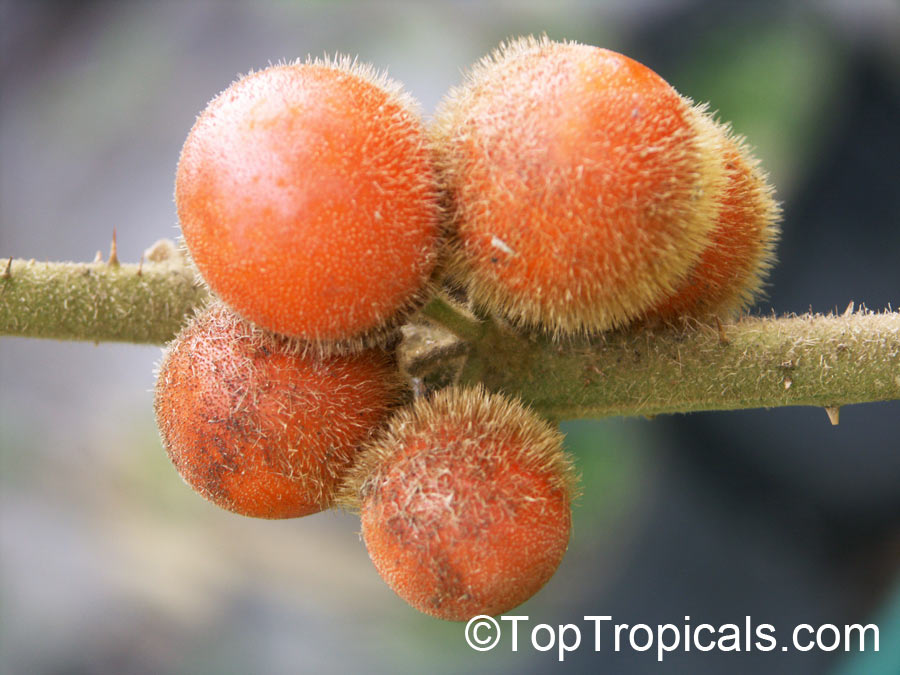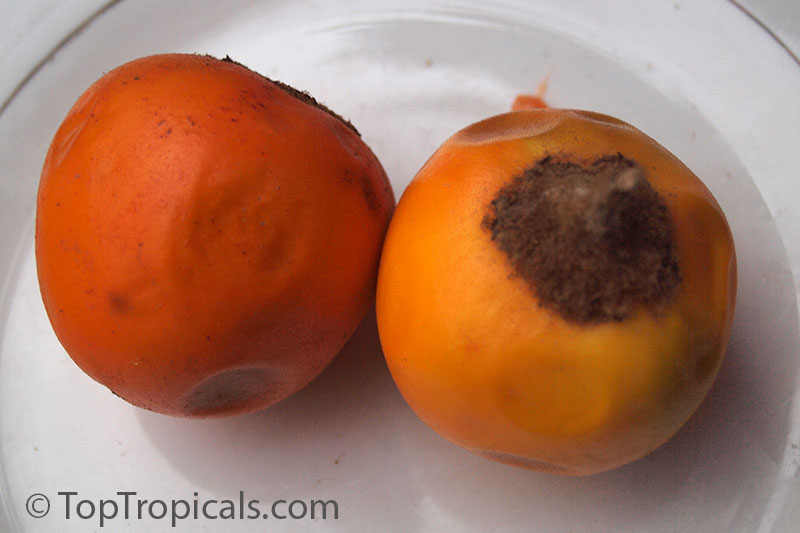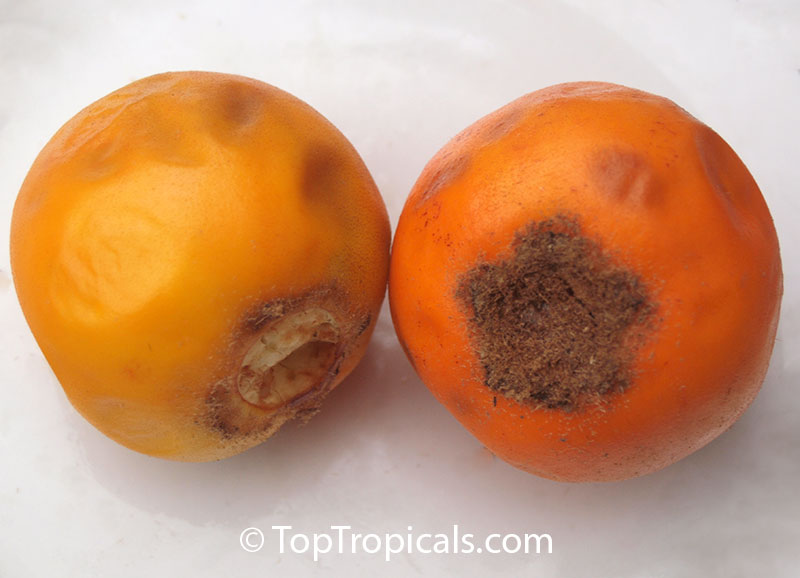Solanum quitoense (Naranjilla)
Top Tropicals Plant Encyclopedia
Botanical names: Solanum quitoense, Solanum angulatum
Common names: Naranjilla, Naranjillo, Lulo
Family: Solanaceae
Origin: Andes Mountains








Solanum quitoense (commonly known as Naranjilla) is a small plant that grows to a height of 2-5 ft and produces white, off-white flowers. Its blossoms may be blue, lavender, or purple in color. This interesting plant native to the Andes Mountains is covered with large thorns and spines that grow out from its stems and leaves, but are actually harmless. Despite its prickly exterior, the edible fruits of the Naranjilla are quite delicious, resembling a large cherry tomato with a sweet-and-sour, yellow to greenish pulp. The plant matures and can produce a large number of fruits, which are often eaten fresh, but can also be used for making drinks, preserves, and desserts.
When grown in colder regions, the Naranjilla should be container grown to ensure proper care and maintenance. It requires full sun and semi-shade, and the soil should be kept moist at all times. Additionally, root nematodes may be a problem, but can be controlled with container growing. Grows well in USDA Zones 10 -12. As a subtropical plant, the Naranjilla flowers best when temperatures are slightly cooler than tropical, and can withstand brief temperatures as cold as 30s F.
Similar plants: Solanum quitoense (Naranjilla)
- Solanum aculeatissimum (Cockroach berry)
- Solanum atropurpureum (Malevolence)
- Solanum bahamense (Bahama Nightshade)
- Solanum betaceum (Tamarillo)
- Solanum bonariense (Granadillo)
- Solanum capsicastrum (Winter Cherry)
- Solanum conocarpum (Marron Bacoba)
- Solanum diphyllum (Twoleaf nightshade)
- Solanum dulcamara (Bittersweet Nightshade)
- Solanum elaeagnifolium (Silverleaf Nightshade)
